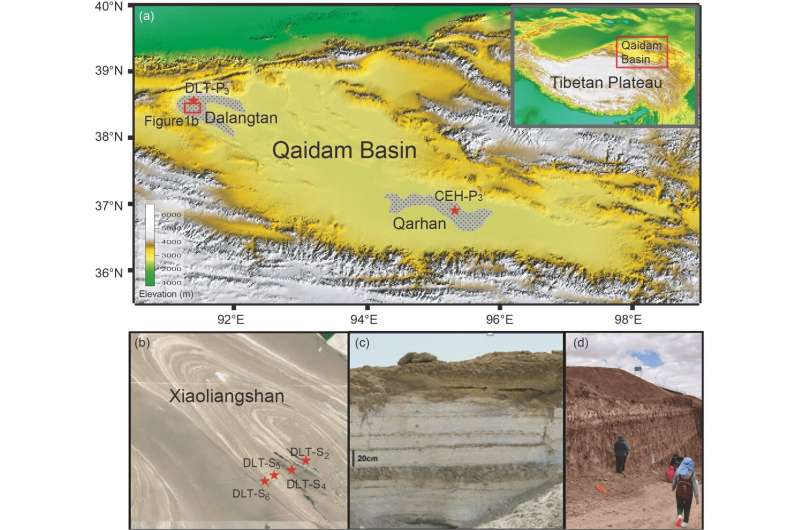Life on Mars? Implication from analog sites in Qaidam Basin, northwestern China

Astrobiology is a scientific field that studies the origin,evolution, and distribution of life and habitability in the universe. Mars is the most promising planet for the discovery of extraterrestrial life in the solar system; thus, exploration of Martian life and habitable environment have been a special focus in planetary science.
Salts deposits are the key targets for exploring traces oflife on Mars, including possible organic molecules of biogenic origin. As there is no Martian sample returned to Earth, and human beings are not able to reach Mars for experiments to date, analogy researchs on Earth are the main method for studying life in Martian salt deposits.
The continuous drought, strong ultraviolet radiation and various landforms have made Qaidam Basin an ideal Martain analog site. In this paper, Dr. Cheng (School of Geography and Tourism, Guangdong University of Finance and Economics) and Dr. Xiao (State Key Laboratory of Geological Processes and Mineral Resources, Planetary Science Institute, China University of Geosciences) determine the distribution of the lipid of the salt sediments in the Qaidam Basin (see image below)and compare these results with that of the typical Martain analog sites.
The team found that salt samples in the Qaidam Basin are enriched with fatty acid compounds, GDGTs and archaeol compounds were also detectedin these salt samples. Compared with the hypersaline samples, the clay samples not only have a higher abundance of fatty acids,GDGTs and archaeol compounds, but also a more diverse lipids composition. The distribution of lipids in the salt deposits from the Qaidam Basin provides an important reference for Mars.
The research was published in Science China Earth Sciences.
More information: Ziye Cheng et al, Distribution characteristics of lipids from salt sediments in Qaidam Basin and their astrobiological significance, Science China Earth Sciences (2021). DOI: 10.1007/s11430-021-9812-2
Journal information: Science China Earth Sciences
Provided by Science China Press




















